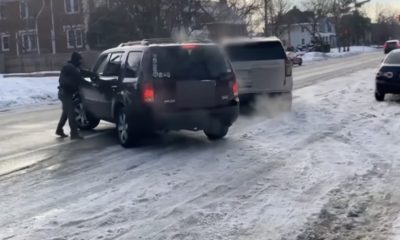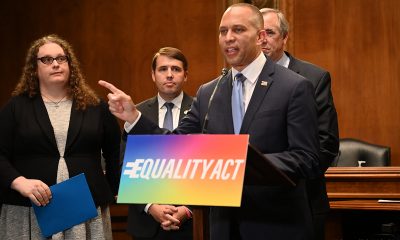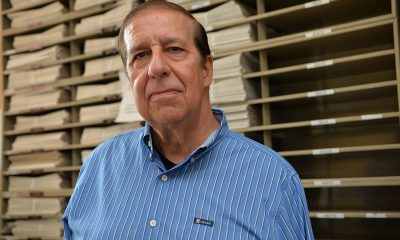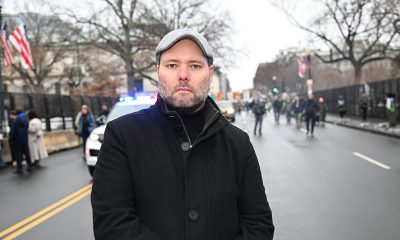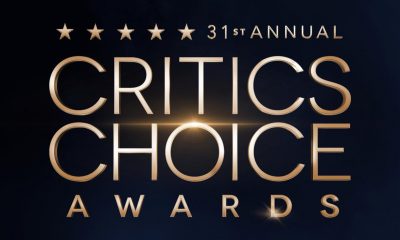National
Gay Ukrainian immigrant looked to social media to find himself
Artem Bezrukavenko was born in Donetsk
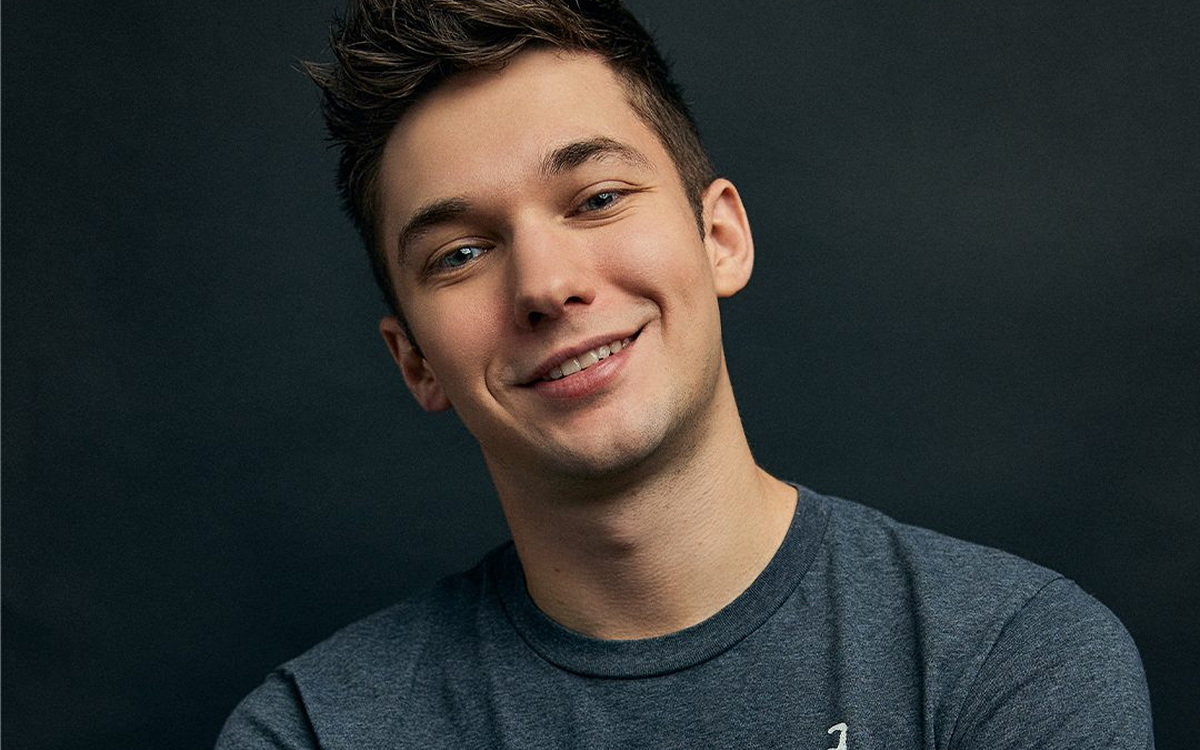
On the streets of New York City, Artem Bezrukavenko stood next to a bystander with a microphone.
“What would be your ideal boyfriend?” he asked the man.
But he didn’t answer. Instead, he posed the same question to Bezrukavenko.
“My ideal boyfriend would be loyal, ambitious and monogamous,” Bezrukavenko said, adding: “He knows what he wants from life, loves me — I love him — and we have very good goals that are going to bring us together.”
Of course, Bezrukavenko has already found this man. He and his boyfriend have been together for over a year and share a one bedroom apartment in the Upper West Side.
But it hasn’t always been this way for Bezrukavenko. The 25-year-old, who was born in the Donetsk region of eastern Ukraine, left the country for nearby Poland in 2014, the year Russia annexed Crimea from Ukraine — beginning a period of prolonged bloodshed in the country’s Donetsk and Luhansk regions. He moved to the U.S. a few years later, in 2017.
Bezrukavenko told the Los Angeles Blade that he has been closeted most of his life. But, through social media, he said he learned to embrace his queer identity.
“When I started to do content, I didn’t really show my gay side,” he said. “But, at some point, I just kind of dived into it. I saw there were a lot of people who could relate to me. And, in fact, I do change a lot of people’s lives.”
Double-edged sword
Discussions surrounding the LGBTQ community and social media often focus on cyberbullying and hate speech. However, some research has shown that the internet can also provide LGBTQ people, particularly youth, a safe space to explore themselves — especially if they come from an unsupportive environment.
According to a study published in the Journal of Medical Internet Research, sexual minorities between 10 and 16 years old more often reported joining a group or web-based community to make themselves feel less alone compared to their heterosexual peers. An Australian survey of people aged 14-21 found digital spaces provide an ideal practice ground for LGBTQ youth to come out, engage with gay culture, socialize with other LGBTQ youth and experiment with non-heterosexual intimacy.
Ross Murray, vice president of the GLAAD Media Institute, said LGBTQ people often use social media to find people like them. He said it can be very easy to feel isolated, but “social media helps you find and realize that you’re not alone.”
On the flip side, Murray said, social media is also used to broadcast who you are. “You can be the one who is sharing your life, being your authentic self, talking about the joys and struggles, so that other LGBTQ people can learn that,” he said.
Bezrukavenko has seen both sides — inspired by LGBTQ creators and empowered by making content that celebrates who he is.
“I looked at some people who were being gay on social media and showing their life,” he said. “I felt like, ‘oh, my gosh, there are so many gay people.’ And they’re not feeling it’s a disadvantage, they make the best out of it.”
That’s not to say social media isn’t an increasingly dangerous place for LGBTQ people. GLAAD, for example, recently analyzed the five major social media platforms – Facebook, Instagram, Twitter, YouTube and TikTok — finding none scored over a 50 percent for LGBTQ safety, privacy and expression. TikTok — the second most popular form of social media amongst teens, according to Pew Research — scored the lowest, with 43 percent.
“This is the dark side of visibility, I guess,” Murray said. “The more visible you get, the more of a target you become.”
Murray said social media is a place where we put ourselves out there. We do it for an intended audience, he said, like people we can educate, comfort or guide. “But that can be seen by anyone,” he said. “And that being seen by anyone also then can turn into a weaponization.”
Bezrukavenko — who dabbled with, but ultimately abandoned, social media before coming out — said fear of online harassment kept him from pursuing it for most of his life. He said he always wanted to do social media, but his biggest fear was that he would be bullied for how he talked or walked, like in school.
War in Ukraine
His life changed drastically in 2014 as war erupted 80 miles from his home in the Ukrainian city of Dobropillya. Bezrukavenko, who was raised by his mother and grandparents, was 17 at the time and had just finished high school.
In an attempt to salvage his country’s lost influence in Ukraine, Russian President Vladimir Putin invaded and annexed Crimea on the northern coast of the Black Sea in March 2014. Then, pro-Russia separatist rebels began seizing territory in the eastern part of the country. But as fighting with the Ukrainian military intensified, the rebels started losing — causing Russia to invade eastern Ukraine in August 2014. As of September 2014, more than 2,500 Ukrainians have been killed.
Bezrukavenko wanted to build a life for himself. Not only was there war, but he also said he knew he was gay and — though he saw the country making some efforts toward LGBTQ tolerance — ultimately didn’t see Ukraine as a place where he would be comfortable.
“I knew I did not belong in Ukraine, and I always wanted to go away,” he said.
Bezrukavenko said his Ukranian identity is complicated — he hasn’t felt a strong connection to the country since he left it in 2014. Even with today’s war in Ukraine, he still doesn’t feel a strong sense of Ukrainian identity.
In February of this year, Putin announced a “special military operation” in the country — the war still has no end in sight. Nearly 8 million Ukrainians have fled the country since Russia’s invasion, making it the worst refugee crisis in Europe since World War II. Russia has also been accused of war crimes.
Bezrukavenko still has family in Ukraine. In fact, his uncle is fighting in the war. “I don’t really miss Ukraine, and I don’t really want to live there,” he said. “But I don’t want them to be under the bumps.”
Bezrukavenko said he thinks his sense of Ukrainian identity has faded because he moved from the country at a young age. He said since moving to America, the feeling has faded even more.
“My whole adult life, I was out of there, so I feel like I’m probably more American than Ukrainian at this point,” he said.
Bezrukavenko’s journey
So he could leave the country, Bezrukavenko’s family — who he was not out — borrowed money and sent him to Warsaw with a three-month allowance. Knowing little Polish, he was set to start at the University of Management.
He said he had to “hustle” in Poland. In addition to school, Bezrukavenko worked two jobs at a time – working for months without a day off. At one point, he was expelled from school for poor attendance. (He was later readmitted.)
“I didn’t have a choice,” he said. “It’s not like I didn’t want to go to school, I just didn’t have time.”
After six months of being in Warsaw, Bezrukavenko’s mother joined him. They shared a small studio apartment with nothing to sleep on but a small couch. He worked during the day while his mother worked nights.
“There was no time for anything,” he said. “It was just working.”
Bezrukavenko worked several jobs in Warsaw — from distributing flyers to being a receptionist and sales associate. “You know, it sounds terrible but it was a good time,” he said.” I had a dream and I was saving money for America.”
After three years in Poland — with only $500 in his pocket — Bezrukavenko moved to the U.S. in 2017. His mother stayed back in Warsaw.
In the years since, Bezrukavenko has moved coast to — starting his journey in Ocean City, Md., then New York City (for one day), then Chicago, then Los Angeles, then Austin, until he ended up in Manhattan.
“I did a circle kind of,” he said.
All the while, he worked in restaurants, call centers and retail — to name a few — to make ends meet.
Coming out — twice
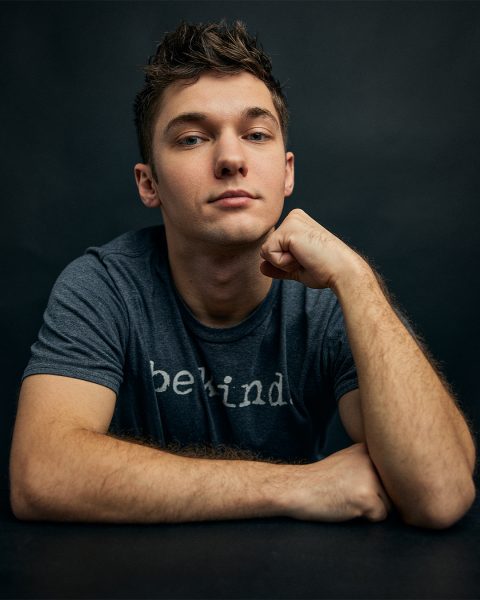
During this period, Bezrukavenko was closeted. While living in Warsaw, he remembers telling his mother he was gay. She suggested that a psychologist could help him.
“Even though my mom is the most progressive mom ever — I mean, she was my best friend all my life. But she still couldn’t believe that I was gay,” Bezrukavenko said. “So we kind of forgot about it.”
After having his heart broken in Austin — though he said it “wasn’t really that broken, I was just being [dramatic]” — Bezrukavenko came out to his mother again. This time went smoother than the last.
“After I came out to my mom, I was just like, I just need to come out — I just need to get it over with,” he said.
Bezrukavenko publicly came out as gay in a video posted on Christmas 2020 while living in Austin. In it, he held the LGBTQ Pride flag over his shoulders. Within three hours, the video had 500,000 views.
“I thought in my head, I make a problem for myself being gay,” he said. “Why don’t I look at it as not a problem but an advantage?”
He said that his life changed a lot after posting that video, something that shocked him. He began to grow on all different platforms — like TikTok, Instagram and YouTube — sharing his story, doing LGBTQ-themed videos, posting so-called “thirst traps” and doing comedy.
Bezrukavenko also noticed that many people online were already saying he was gay. For example, he said he ran a YouTube channel in Polish about living in America while he was closeted. As the channel grew, so did the number of people saying he acted gay — which, at the time, made him feel ashamed.
“They would say I am giving Cher,” he said, referring to a viral Shawn Mendes video, where the singer told his then-girlfriend Camila Cabello that “it’s giving Cher.” The meme invited inappropriate jokes about Mendes’ presumed sexuality.
But as it turned out, Bezrukavenko said, being unapologetically himself on the internet set him free and racked up more views.
“I realized at this point, why do I hide myself?” he said. “I have a very unique perspective.”
Gay content for gay people
Now, Bezrukavenko is living in Manhattan with his boyfriend, mainly creating content on TikTok, Instagram and OnlyFans.
Bezrukavenko recently teamed up with a fellow gay influencer, StanChris, to film a series of videos later seen on TikTok and Instagram.
“He seems really, really motivated — and I really liked that,” Chris, who asked the Blade to use his first name only, said. “He’s like, go, go, let’s work. And he’s always thinking of new ideas and stuff.”
The two met after Chris noticed a viral Instagram reel Bezrukavenko posted. When Chris clicked on the account, he noticed Bezrukavenko had already attempted to DM him. So he wrote back, and the two began communicating.
Chris, who lives in New Hampshire, was in New York for a skateboarding event and suggested that the two meet in person to film videos. After spending some time in Bezrukavenko’s apartment, the two embarked on a night in the city.
“We were just interviewing random people, asking them questions for more short videos to make,” Chris said. “And we both got multiple viral videos from doing that, so we had some good energy, good vibes, good luck.”
Bezrukavenko said he is focusing on making gay content for gay people. “I realized at some point that there is not enough gay content — that there is not enough good representation,” he said.
He does have one account, Art in the Park — a TikTok page with over 120,000 followers and north of 3 million likes where he interviews people on the streets of New York City — with the purpose of capturing a wider audience. Though he has come to love interviewing people, he said he is also focused on his LGBTQ-themed comedy on his personal accounts.
Bezrukavenko said his life is the most stable it’s ever been. After losing both his grandparents last year, he met his now boyfriend.
“I don’t want to say I’m a religious person, but I feel like there’s some power,” he said. “I told my mom a lot that I feel like [my boyfriend] was sent to me by my grandparents.”
He described his personal life as “very boring because it’s very good.”
Minnesota
Reports say woman killed by ICE was part of LGBTQ community
Renee Nicole Good shot in Minneapolis on Wednesday
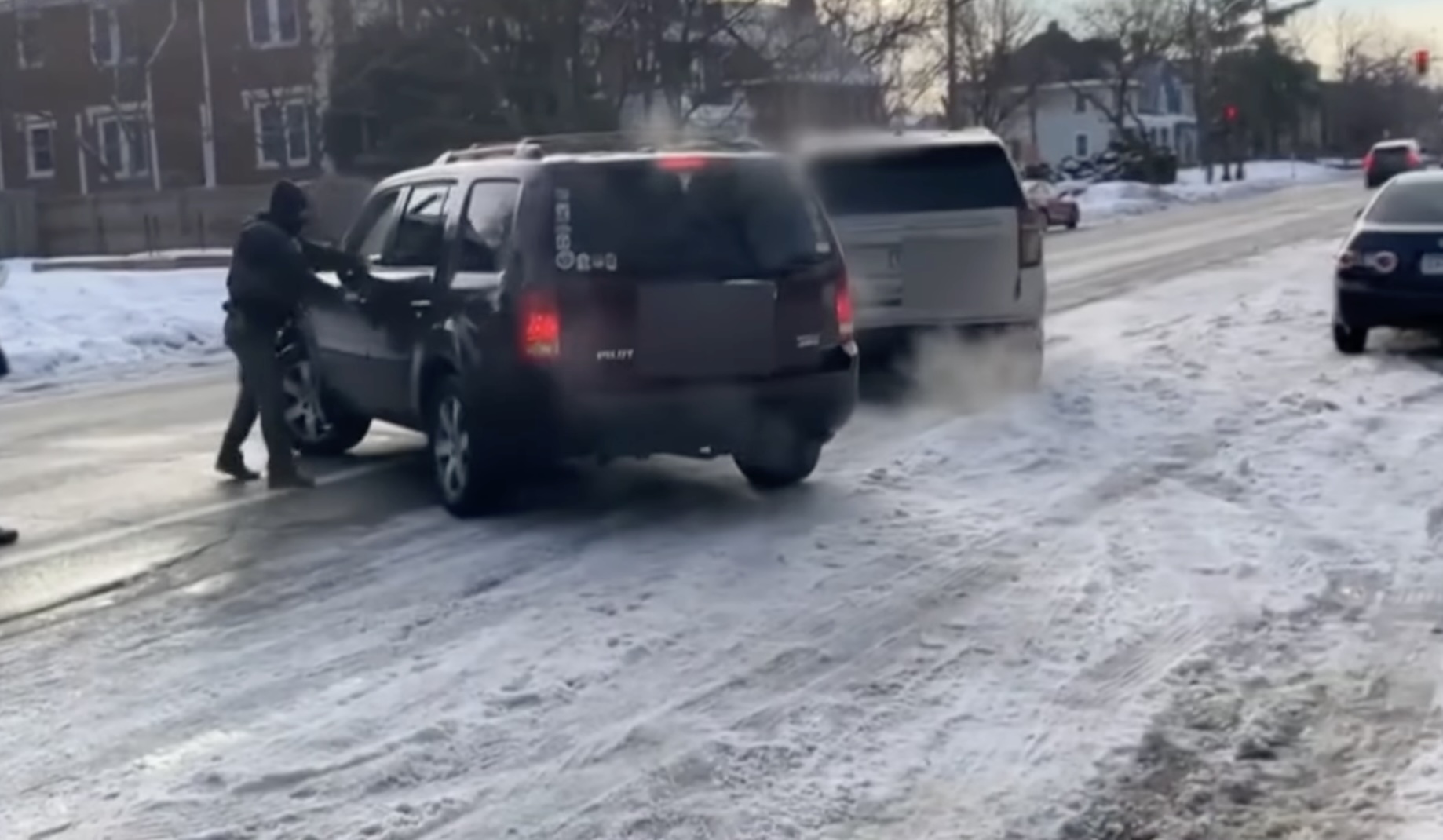
A U.S. Immigration and Customs Enforcement agent shot and killed a woman in Minneapolis as she attempted to drive away from law enforcement during a protest on Wednesday.
The Star Tribune newspaper identified the victim as Renee Nicole Good, 37, a Minneapolis resident who lived blocks from where she was shot in the Central neighborhood, according to reports. Donna Ganger, Good’s mother, told the Star Tribune that her daughter lived in the Twin Cities with her wife.
Multiple videos of the shooting have gone viral on social media, showing various angles of the fatal incident — including footage that shows Good getting into her car and attempting to drive away from law enforcement officers, who had their weapons drawn.
In the videos, ICE agents can be heard telling Good to “get out of the fucking car” as they attempted to arrest her. Good, who press reports say was married to a woman, ended up crashing her car into an electric pole and other vehicles. She was later transported from the scene of the shooting and died at the hospital.
President Donald Trump defended the ICE agent on Truth Social, saying the officer was “viciously” run over — a claim that coincides with Homeland Security Secretary Kristi Noem’s assessment of the situation. Noem, a South Dakota Republican, insisted the officer “fired defensive shots” at Good after she attempted to run over law enforcement agents “in an attempt to kill them — an act of domestic terrorism.”
Multiple state and local officials disputed claims that the shooting was carried out in self-defense at the same time Noem was making those assertions.
An Instagram account that appears to belong to Good describes her as a “poet and writer and wife and mom and shitty guitar strummer from Colorado; experiencing Minneapolis, MN,” accompanied by a rainbow flag emoji.
A video posted to X after the shooting shows a woman, reportedly her wife, sitting on the ground, crying and saying, “They killed my wife. I don’t know what to do.”
“We’ve dreaded this moment since the early stages of this ICE presence in Minneapolis,” Mayor Jacob Frey said during a Wednesday press conference. “Having seen the video myself, I want to tell everybody directly that [the DHS’s claim of self-defense] is bullshit. This was an agent recklessly using power that resulted in somebody dying, getting killed.”
“I have a message for ICE. To ICE, get the fuck out of Minneapolis,” Frey continued. “We do not want you here. Your stated reason for being in this city is to create some kind of safety, and you are doing exactly the opposite. People are being hurt. Families are being ripped apart. Long-term Minneapolis residents that have contributed so greatly to our city, to our culture, to our economy are being terrorized, and now somebody is dead. That’s on you, and it’s also on you to leave.”
Across the Capitol, members of the House and the Senate condemned the actions of the officer.
“There’s no indication she’s a protester, there’s nothing that at least you can see on the video, and therefore nothing that the officers on the ground could see that identify her as someone who’s set out to try to do harm to an ICE officer,” U.S. Sen. Elizabeth Warren (D-Mass.) said Wednesday night on MS NOW’s “The Weeknight.”
“There is no evidence that has been presented to justify this killing,” House Minority Leader Hakeem Jeffries (D-N.Y.) said in a statement on his website. “The masked ICE agent who pulled the trigger should be criminally investigated to the full extent of the law for acting with depraved indifference to human life.”
“ICE just killed someone in Minneapolis,” U.S. Rep. Robert Garcia (D-Calif.) the highest-ranking Democrat on the House Oversight Committee, posted on X. “This administration’s violence against communities across our country is horrific and dangerous. Oversight Democrats are demanding answers on what happened today. We need an investigation immediately.”
In a statement to the Advocate, Human Rights Campaign President Kelley Robinson wrote, “Today, a woman was senselessly killed in Minneapolis during an ICE action — a brutal reminder that this agency and the Trump regime put every community at risk, spreading fear instead of safety. Reports that she may have been part of the LGBTQ+ community underscore how often the most vulnerable pay the highest price.”
National LGBTQ Task Force President Kierra Johnson also responded to Good’s death.
“We recognize and mourn the loss of Renee Nicole Good and extend our condolences to her family, loved ones, and community,” said Johnson in a statement. “This loss of life was preventable and reprehensible, particularly coming at the hands of federal agents.”
National
U.S. in midst of ‘genocidal process against trans people’: study
Attacks rooted in Nazi ideology’s views on gender

Earlier this week, the Lemkin Institute for Genocide Prevention and Human Security issued a haunting warning. Dr. Elisa von Joeden-Forgey, president of the Lemkin Institute, stated that the U.S. is in the “early-to-mid stages of a genocidal process against trans and nonbinary and intersex people.” Dr. Gregory Santon, former president of the International Association of Genocide Scholars, flags “a hardening of categories” surrounding gender in a “totalitarian” way.
Stanton argues that this is rooted in Nazi ideology’s surrounding gender — this same regime that killed many LGBTQIA individuals in the name of a natural “binary.” As Von Joeden-Forgey said, the queer community, alongside other “minority groups, tends to be a kind of canary in the coal mine.”
In his first year in office, Trump and his Cabinet’s anti-trans rhetoric has only intensified, with a report released late September by journalist Ken Klippenstein in which national security officers leaked that the FBI is planning to classify trans people as “extremists.” By classifying trans people as “Nihilistic Violent Extremists,” far-right groups would have more “political (and media) cover,” as Abby Monteil reports for them, for anti-trans violence and legislation.
While the news is terrifying, it’s not unprecedented – the fight against trans rights and classification of trans people as violent extremists was included in Project 2025, and in the past several weeks, far-right leaders’ transphobic campaign has expanded: boycotting Netflix to pressure the platform to remove trans characters, leveraging anti-trans attack ads in the Virginia governor’s race and banning professors from acknowledging that trans people exist. In fact last month, two Republican members of Congress called for the institutionalization of trans people.
It’s a dangerous escalation of transphobic violence that the Human Rights Campaign has classified as an epidemic. According to an Everytown for Gun Safety report published in 2020, the number of trans people murdered in the U.S. almost doubled between 2017 and 2021. According to data released by the Gun Safety report from February 2024, 34 percent of gun homicides of trans, nonbinary, and gender expansive people remain unsolved.
As Tori Cooper, director of Community Engagement for the Transgender Justice Initiative for the Human Rights Campaign Foundation, this violence serves a purpose. “The hate toward transgender and gender expansive community members is fueled by disinformation, rhetoric and ideology that treats our community as political pawns ignoring the fact that we reserve the opportunity to live our lives full without fear of harm or death,” Cooper said.
“The genocidal process,” Von Joeden-Forgey said, “is really about destroying identities, destroying groups through all sorts of means.” And just like the Nazi regime, former genocide researcher Haley Brown said, the Trump administration is fueling conspiracy theories surrounding “cultural Marixsm” — the claim that leftists, feminists, Marxists, and queer people are trying to destroy western civilization. This term, Brown states, was borrowed directly from the Nazi’s conspiracies surrounding “Cultural Bolshevism.”
As Brown explains, historians are just beginning to research the Nazis’ anti-trans violence, but what they are finding reveals a terrifying pattern wherein trans people are stripped of their identification documents, arrested and assaulted, and outright killed.
Before World War II, Germany – especially Berlin – was a hub for transgender communities and culture. In 1919, Dr. Magnus Hirschfield, a Jewish gay sexologist and doctor, founded the Institut für Sexualwissenschaft, the Institute for Sexual Science. The Institute was groundbreaking for offering some of the first modern gender-affirming healthcare, with a trans-affirming clinic and performing some of the first gender-affirming surgeries in the 1930s for trans women Dora Richter and Lili Elbe.
Researchers at the institute coined the term “trassexualism” in 1923, which while outdated now, was the first modern term that Dr. Hirschfield used when working with Berlin police to acquire “transvestite passes” for his patients to help them avoid arrest under public nuisance and decency laws. During the Weimar Republic, trans people could also change their names although their options were limited. In Berlin, queer press flourished after World War I along with a number of clubs welcoming gay, lesbian and trans clientele, including Eldorado, which featured trans performers on stage.
But as Hitler rose to power, trans people were targeted. In 1933, Nazi youth and members of the Sturmabteilung ransacked the institute, stealing and burning books – one of the first book burnings of the Nazi regime. German police stopped recognizing the “transvestite” passes and issuing new ones, and under Paragraph 175, which criminalized sexual relationships with men, trans women (who were misgendered by the police) were arrested and sent to concentration camps.
As the Lemkin Intsitute for Genocide Prevention and Human Security wrote in a statement:
“The Nazis, like other genocidal groups, believed that national strength and existential
power could only be achieved through an imposition of a strict gender binary within the racially pure ‘national community.’ A fundamentalist gender binary was a key feature of Nazi racial politics and genocide.”
History professor Laurie Marhoefer wrote for The Conversation that while trans people were targeted, there was not extensive discussion of them by the regime. But there was evidence of the transphobia behind the regime’s violence, specifically in Hermann Ferdinand Voss’s 1938 book “Ein Beitrag zum Problem des Transvestitismus.”Voss noted that during the Nazi regime, trans people could and were arrested and sent to concentration camps where they underwent forced medical experimentation (including conversion therapy and castration) and died in the gas chambers.
While there is growing recognition that gay, bisexual, and lesbian individuals were targeted during the Holocaust, few know about the trans genocide through which trans individuals were arrested, underwent forced castration and conversion therapy, and were outright killed alongside gay, lesbian, disabled and Jewish individuals in concentration camps. Historians are just beginning to undertake this research, writes Marhoefer, and to delve further into the complex racial hierarchies that affected how trans people were treated.
As Zavier Nunn writes for Past & Present, trans people of “Aryan” racial status and those not considered to be homosexuals were sometimes spared from the worst violence and outright murder. Depending on their skills, they could even be considered for rehabilitation into the Volksgemeinschaft, or Nazi utopian community. As Nunn highlights, trans violence was much more nuanced and individualized and should be explored separately from violence against gay and lesbian individuals during the Holocaust.
Marhoefer’s research of violence against trans women, as recorded in police files (as is the persecution of gay and lesbian individuals), is groundbreaking but rare. He gave a talk at the Museum of Jewish Heritage in 2023, shortly after a 2022 civil lawsuit about denial that trans people were victims of the Holocaust. The German court recognized that trans people were victimized and killed by the Nazi regime, but in the United States, there is still a hesitancy by the wider LGBTQ community and leftist groups to acknowledge that we are living during a time of anti-trans violence, that trans people are being used as political scapegoats in order to distract from real problems of accountability and transparency around government policy.
As anti-trans legislation escalates, it’s important to remember and call out how trans violence is not only a feminist issue, it’s a human rights one as well. While Shannon Fyfe argues that the current campaigns against trans people may not fit the traditional legal definition of a genocide, the destruction and denial of life saving care, access to public spaces, and escalating violence is still immensely devastating.
Kaamya Sharma also notes that the term “genocide” has deep geo-political implications. As she explained, “western organisations are, historically and today, apathetic to the actual lives of people in the Global South, and put moral posturing above Brown and Black lives,” so the choice to use “genocide” is a loaded one. But as the Lemkin Institute for Genocide Prevention and Human Security writes in the same statement: “The ideological constructs of transgender women promoted by gender critical ideologues are particularly genocidal. They share many features in common with other, better known, genocidal ideologies. Transgender women are represented as stealth border crosses who seek to defile the purity of cisgender women, much as Tutsi women were viewed in Hutu Power ideology and Jewish men in Nazi antisemitism.”
Trans people are not extremists, nor are they grooming children or threatening the fabric of American identity – they are human beings for whom (like all of us) gender affirming care is lifesaving. As we remember the trans lives lost decades ago and those lost this year to transphobic violence, knowing this history is the only way to stop its rewriting.
National
What to watch for in 2026: midterms, Supreme Court, and more
Federal policy battles carry grave implications for LGBTQ Americans
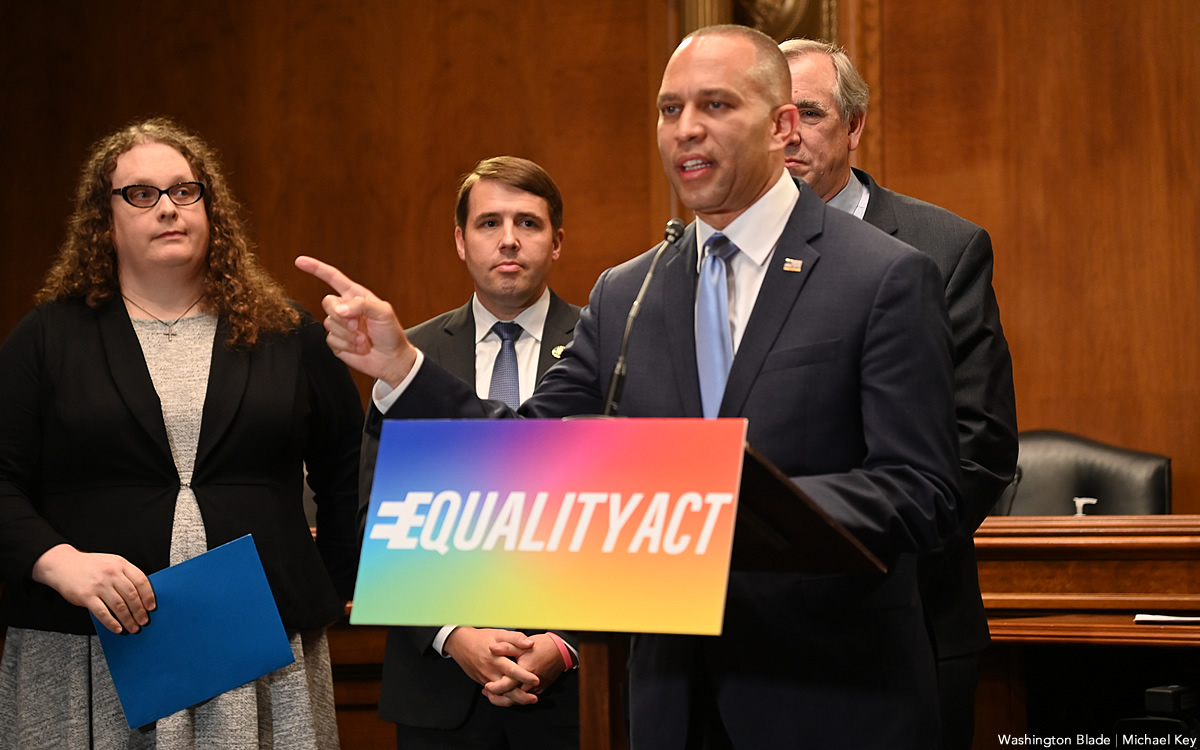
With the start of a new year comes a new slate of legal and political developments poised to change our world. From consequential Supreme Court cases and a potential House of Representatives leadership flip to preparations for the United States’s 250th anniversary, 2026 is expected to be a critical year—particularly as LGBTQ rights, and transgender rights specifically, remain a focus of national debate.
Across Congress, the courts, federal agencies, and statehouses, decisions made this year are poised to shape the legal and political landscape for LGBTQ Americans well beyond the next election cycle.
Congress
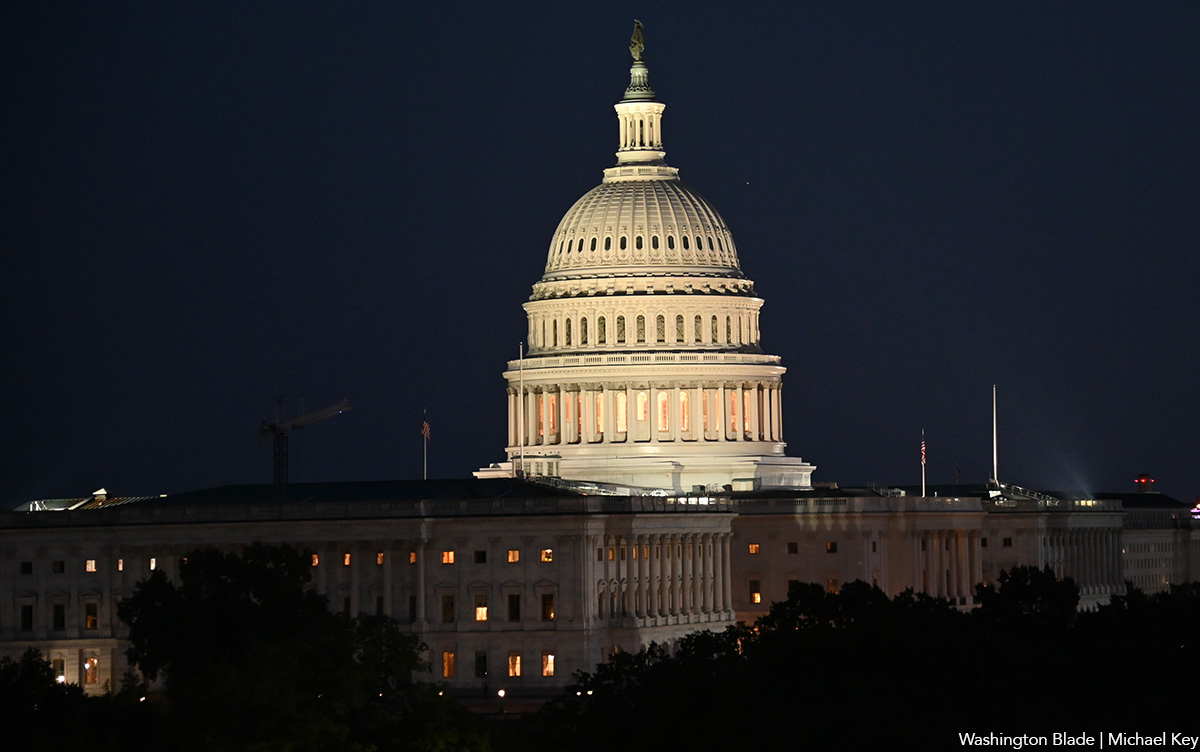
In 2026, a sizable number of federal seats will be up for grabs. All 435 districts in the U.S. House of Representatives will be on the ballot, offering Democrats a chance to flip the chamber and reclaim a measure of control from Republicans, who have held the House since 2022. Control of the House will be especially critical as lawmakers weigh legislation tied to civil rights, health care access, and the scope of federal protections for LGBTQ Americans.
A Democratic majority would also determine committee leadership, oversight priorities, and the ability to block or advance legislation related to transgender health care, education policy, and federal nondiscrimination protections.
Several House races are expected to be particularly significant for LGBTQ representation and leadership, including contests in Texas’s 32nd Congressional District, New York’s 17th, and Illinois’s 9th.
In Texas’s 32nd District, Democratic incumbent Julie Johnson is seeking reelection in the northeastern Dallas-area seat. Johnson is the first openly LGBTQ person ever elected to Congress from Texas or the South, according to her congressional website. Her reelection bid comes amid Republican efforts to redraw the district to consolidate GOP power, following demands from President Trump — moves that have made the race increasingly challenging.
While in office, Johnson has pushed for expanded Medicare access, stronger LGBTQ rights protections, and broader health care equity. The race has become a key test case for LGBTQ incumbents navigating increasingly hostile political and electoral environments, particularly in southern states.
In New York’s 17th Congressional District, Democrat Cait Conley is mounting a challenge against Republican incumbent Mike Lawler in the lower Hudson Valley, just north of New York City. Conley is a former active-duty Army officer who was deployed six times and has leaned into that experience to connect with the district’s mixed constituency.
The district has frequently flipped between parties and includes a politically influential conservative Hasidic community, making it one of the more competitive seats in the region. An out lesbian, Conley has spoken forcefully in support of LGBTQ rights and has received the endorsement of LPAC, positioning herself as a pro-equality candidate in a closely watched race that could help determine control of the House.
The Illinois 9th Congressional District is also shaping up to be a competitive open-seat contest. The district spans parts of Cook, Lake, and McHenry counties and includes much of Chicago’s North Side. In 2025, Democratic Rep. Jan Schakowsky announced she would not seek reelection after representing the district since January 1999.
Mike Simmons, who was elected to the Illinois State Senate in 2021, is seeking the seat. Simmons was the first openly LGBTQ person and the first Ethiopian American elected to the state Senate, where he has focused on expanding LGBTQ rights, strengthening democratic institutions, and addressing cost inequities in health care, housing, and support for community-based organizations. Given the district’s suburban makeup, the race could emerge as a frontline contest for pro-equality legislative influence.
If Democrats are successful in reclaiming control of Congress, the outcome would reshape leadership at the highest levels. One potential result would be Hakeem Jeffries becoming the first elected Black Speaker of the House, a historic milestone with implications for legislative priorities, representation, and the direction of Democratic leadership.
Beyond the House, control of the U.S. Senate will also be in play. In total, 35 of the Senate’s 100 seats will be up for election in 2026. Of those, 33 are regularly scheduled races, with two additional special elections set to take place in Florida and Ohio. Several of these contests are expected to hinge on issues such as abortion access, federal oversight, judicial confirmations, and the future of LGBTQ protections at the national level. Political observers view the Senate as a tougher flip for Democrats but not an impossible task.
Governorships
Gubernatorial races will further shape the policy environment across the country. A total of 36 states and three U.S. territories could elect new governors in 2026, many of whom will have significant influence over education policy, health care access, and the enforcement—or rollback—of civil rights protections.
One notable development is Republican Sen. Marsha Blackburn’s entry into Tennessee’s gubernatorial race. Blackburn has been an outspoken opponent of LGBTQ rights and has previously proposed constitutional amendments aimed at banning same-sex marriage, making the race one to watch closely for LGBTQ advocates.
Two races to watch

Colorado governor’s race:
Jared Polis made history in 2018 as the first openly gay man elected governor in U.S. history, but his tenure in the Mile High State is coming to a close. Polis cannot run for reelection in 2026 because of term limits. U.S. Sen. Michael Bennet and Colorado Attorney General Phil Weiser are the Democratic frontrunners in a race that could determine whether the state continues its trajectory on LGBTQ-inclusive policy.
Iowa Senate seat:
Zach Wahls is running for Iowa’s U.S. Senate seat. An Iowa State Senator, Wahls has built a record focused on expanding health care access, minimizing government corruption, and protecting LGBTQ equality. Wahls, who was famously raised by two lesbian moms, has frequently pointed to his family as shaping his advocacy, positioning his campaign around personal experience as well as legislative record.
SCOTUS
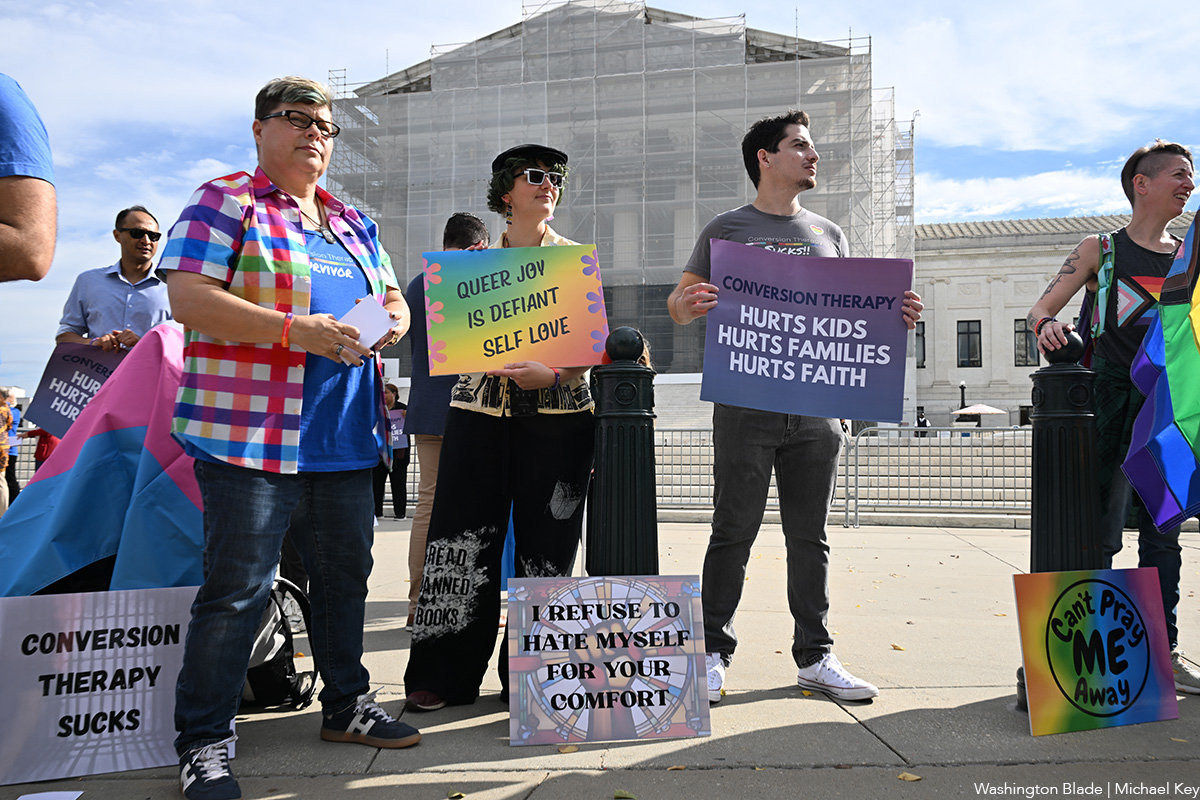
The Supreme Court is expected to issue several rulings this year that could have far-reaching consequences for LGBTQ rights nationwide. Two of the most closely watched issues involve transgender athletes in school sports and the legality of conversion therapy bans.
Two cases heard in 2025 involving transgender athletes in school sports—West Virginia v. B.P.J. and Little v. Hecox—are expected to receive rulings later this year. Oral arguments are scheduled for Jan. 13, with the Court poised to determine whether states can ban transgender girls and women from participating on girls’ sports teams.
Legal experts have warned that the decisions could carry broader civil rights implications beyond athletics, potentially reshaping interpretations of sex discrimination and Title IX protections across education and employment.
The Court is also expected to rule on the future of conversion therapy bans and whether such restrictions are protected under the First Amendment. In October 2025, the justices heard oral arguments in Chiles v. Salazar, a case that will determine whether state and local bans on conversion therapy for LGBTQ youth violate free speech or free exercise of religion protections. A ruling in favor of the plaintiffs could weaken or overturn bans that have been enacted in dozens of states and municipalities.
Federal policy changes
Several new federal policies are being implemented as the year takes shape, with some of the most immediate impacts falling on LGBTQ people. One of the most significant changes is the elimination of gender-affirming care coverage for federal employees.
The policy, put into place by President Trump’s Office of Personnel Management, eliminates health insurance coverage for most gender-affirming medical care in the Federal Employees Health Benefits (FEHB) and Postal Service Health Benefits (PSHB) programs. The change affects hundreds of thousands of federal workers and their families.
The Human Rights Campaign has filed a lawsuit against the OPM policy, alleging that the change violates Title VII’s ban on sex discrimination in employment. Advocates argue that the policy not only limits access to medically necessary care but also signals a broader federal retreat from LGBTQ-inclusive health protections.
Similar proposals are under consideration for the broader American public, including efforts to restrict Medicaid and Medicare coverage for gender-affirming care—moves that could disproportionately impact low-income transgender people, people with disabilities, and those living in rural areas.
Historic anniversaries
In 2026, several historic anniversaries will take place nationwide. The most prominent is the United States’ Semiquincentennial, marking 250 years since the Declaration of Independence. Events are planned across the country, from small-town commemorations to large-scale national celebrations in Washington, D.C.
Among the most anticipated events is the July 4 celebration commemorating 250 years since independence from Great Britain, which is expected to be one of the largest national events of the year.
However, the anniversary planning has already created ripple effects. Capital Pride—Washington’s annual Pride celebration—was forced to move from the second week of June to the third week after the White House announced plans for a large June 14, 2026 celebration on the South Lawn marking President Trump’s 80th birthday.
The White House said the event will include a large-scale Ultimate Fighting Championship (UFC) exhibition involving boxing and wrestling competitions, a decision that has drawn scrutiny from LGBTQ advocates amid ongoing concerns about federal priorities and messaging during a landmark year for the nation.
It also marks 11 years since SCOTUS ruled same-sex marriage is legally protected nationwide with Obergefell v. Hodges.
-

 Sponsored5 days ago
Sponsored5 days agoSafer Ways to Pay for Online Performances and Queer Events
-

 District of Columbia4 days ago
District of Columbia4 days agoTwo pioneering gay journalists to speak at Thursday event
-

 Colombia4 days ago
Colombia4 days agoBlade travels to Colombia after U.S. forces seize Maduro in Venezuela
-

 a&e features4 days ago
a&e features4 days agoQueer highlights of the 2026 Critics Choice Awards: Aunt Gladys, that ‘Heated Rivalry’ shoutout and more

